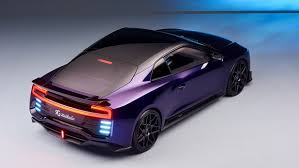
Breaking News
 Canada's MAID CULTURE OF DEATH Just Hit Rock Bottom: KILLING PRISONERS NOW!!!
Canada's MAID CULTURE OF DEATH Just Hit Rock Bottom: KILLING PRISONERS NOW!!!
 Weight gain single-handedly prevented by a gut microbe
Weight gain single-handedly prevented by a gut microbe
 Doug Casey on 2025's Defining Events and What Comes Next
Doug Casey on 2025's Defining Events and What Comes Next
 BREAKING: Officer Tatum & Other Investigators Believe A Potential Suspect In The Brown...
BREAKING: Officer Tatum & Other Investigators Believe A Potential Suspect In The Brown...
Top Tech News
 This tiny dev board is packed with features for ambitious makers
This tiny dev board is packed with features for ambitious makers
 Scientists Discover Gel to Regrow Tooth Enamel
Scientists Discover Gel to Regrow Tooth Enamel
 Vitamin C and Dandelion Root Killing Cancer Cells -- as Former CDC Director Calls for COVID-19...
Vitamin C and Dandelion Root Killing Cancer Cells -- as Former CDC Director Calls for COVID-19...
 Galactic Brain: US firm plans space-based data centers, power grid to challenge China
Galactic Brain: US firm plans space-based data centers, power grid to challenge China
 A microbial cleanup for glyphosate just earned a patent. Here's why that matters
A microbial cleanup for glyphosate just earned a patent. Here's why that matters
 Japan Breaks Internet Speed Record with 5 Million Times Faster Data Transfer
Japan Breaks Internet Speed Record with 5 Million Times Faster Data Transfer
 Advanced Propulsion Resources Part 1 of 2
Advanced Propulsion Resources Part 1 of 2
 PulsarFusion a forward-thinking UK aerospace company, is pushing the boundaries of space travel...
PulsarFusion a forward-thinking UK aerospace company, is pushing the boundaries of space travel...
 Dinky little laser box throws big-screen entertainment from inches away
Dinky little laser box throws big-screen entertainment from inches away
 'World's first' sodium-ion flashlight shines bright even at -40 ºF
'World's first' sodium-ion flashlight shines bright even at -40 ºF
800-horsepower electric supercar hopes to usher in the methanol fuel cell age

Looking uncomfortably close to a tricked-up Nissan GT-R, the Nathalie is a 2-door sports coupé with an electric motor at each wheel, a top power spec of 600 kW (800 hp) and a top speed in excess of 190 mph (306 km/h). It's got a chrome-moly tube frame, a carbon chassis, and plenty of aerodynamic bits for downforce. As with everything Gumpert's laid his hands on, it looks neat, with a youthful and sporty interior, and it goes like the clappers.
Electric vehicles are already highly capable and super practical for the vast majority of driving for most people, who generally do short, regular daily trips that can easily be managed with a full overnight battery top-up at home. For the much lower percentage of trips that take you farther afield, there are some cars that concentrate on offering you super-fast charging, and others that use petrol or diesel generators to charge the batteries as you drive and extend your range.
Gumpert isn't satisfied with either of these options, and wishes to put forth an alternative. The Nathalie thus cruises with a built-in methanol fuel cell. Methanol, says Gumpert, is a third the price of petrol, a ton easier to handle than hydrogen, and allows you to fill your car up in about three minutes to achieve an impressive range of around 530 miles (850-odd km) on a tank if you stick to around 50 miles per hour.



